When humans dominated the oceans, we defeated top predator species to sit at the top of the food chain. All the fish and seafood we catch only serve a mere 3% of human food demand. Yet, this corresponds to 2.7 billion tons of the largest marine species.
When it comes to life on Earth, we often assume it’s the pure domain of biologists. The study of life seems not to share laws with the physical world or formulas with the mathematical realm. But that is not the case.
When God created animal species, “He” secretly incorporated the Second Law of Thermodynamics. The diversity of plant species follows an exponential function proportional to the area those species occupy:

This chart was drawn in 1859, showing the number of different plant species found as their habitat expanded from a small district in England to the entire island nation. All follow an exponential function.
It can be seen that exponential or power functions are a favorite formula of creation. They appear in the distribution spectrum of sizes and frequencies of eruptions on the surface of the Sun, the number of craters on the Moon, and the size of neurons in the human brain.
The spirals of galaxies, the shells of mollusks, and the flowers of plants all develop according to an exponential function with a logarithmic spiral. This is also true for all structures from horns, teeth, spines, scales, claws, and beaks of various animals.
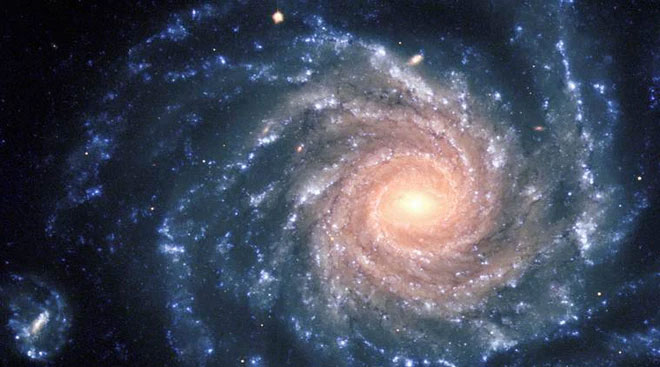
Galactic spiral.
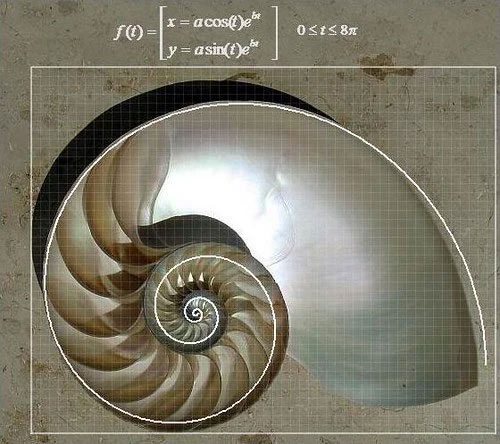
The structure of a shell.
Within the depths of the ocean, creation also established an exponential function known as “Sheldon’s Spectrum“, which dictates the size and quantity of marine species. The Sheldon Spectrum may have existed for billions of years since the first organisms appeared beneath the ocean.
However, only in the past 170 years, as humans have industrialized ocean exploitation, has the Sheldon Spectrum been rapidly disrupted.
Sheldon Spectrum: How Creation Allocates Life in the Ocean
The Sheldon Spectrum was first proposed by Canadian marine biologist Raymond W. Sheldon in 1972. After conducting statistical studies in the Atlantic and Pacific Oceans, Sheldon discovered that the biomass density of marine ecosystems is a logarithmic function that remains approximately constant across many orders of magnitude of organisms.
Simply put, as the size of marine organisms increases, the number of individuals in the ocean decreases. According to Sheldon, this ratio follows a constant exponential function for all organisms at all size levels, from bacteria to whales.
For example, mollusks that are 12 orders of magnitude smaller than tuna will have a population that is 12 orders of magnitude larger than that of tuna, which is about 1 billion times more.
The result of the Sheldon Spectrum is that the biomass of species in the ocean is nearly similar. This means that if you were to catch all the tuna in the world and weigh them, the kilograms you would obtain would be equivalent to the kilograms of mollusks present in the sea.
This has been tested in several small environments, where scientists found that the Sheldon Spectrum holds true in many cases, from marine plankton to freshwater fish.
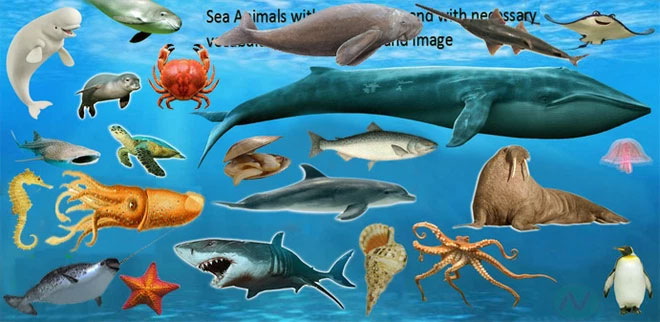
The Sheldon Spectrum holds true in many cases, from marine plankton to freshwater fish.
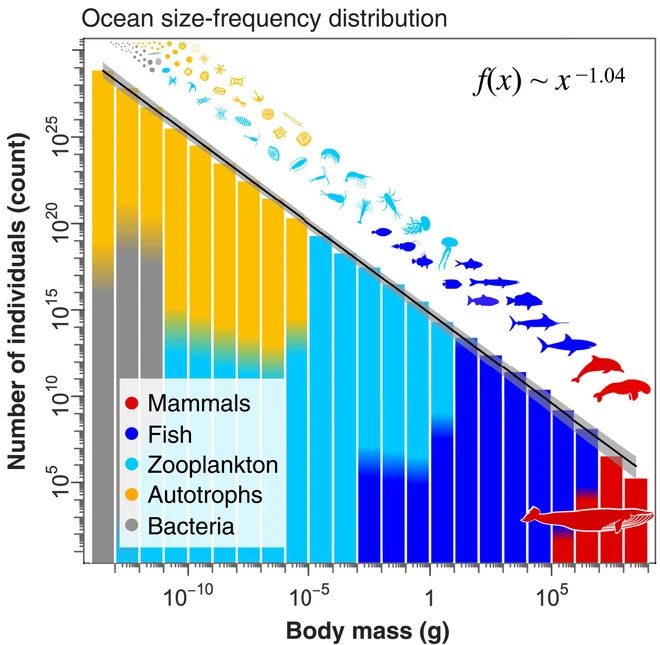
Research shows that the biomass of marine organisms follows the exponential function of the Sheldon Spectrum.
However, in a new study conducted for the first time, scientists from the Max Planck Institute in Germany aimed to broaden the scope and test the Sheldon Spectrum on a global scale. The goal was to see if it holds true across all oceans.
To do this, they surveyed 33,000 locations, covering 12 groups of organisms including bacteria, algae, plankton, fish, and mammals like dolphins and whales worldwide.
“We made estimates for organisms from the smallest level, across more than 200,000 water samples collected worldwide“, said ecologist Ian Hatton from the Max Planck Institute. “The biomass ratio of these organisms is equivalent to the ratio between humans and the entire Earth.“
According to Hatton, the biggest challenge the research team faced was synchronizing estimates to compare the biomass of species of different sizes, from bacteria to whales. Each marine organism requires a different estimate, making synchronization very difficult.
The Ocean Was Completely Balanced in Pre-Industrial Times Until Humans Took Over
Overcoming technical and methodological challenges, Hatton and his team finally obtained results. It confirmed that the Sheldon Spectrum aligns with historical data and the conditions of a pre-industrial ocean, meaning before 1850.
“We were surprised to see that each size level of organisms had a biomass of about 1 gigaton globally“, said geologist Eric Galbraith from McGill University. “The fact that marine organisms were distributed evenly across all sizes is remarkable.“
According to Galbraith, creation could have arranged life in the ocean in many ways. For example, why didn’t God prioritize a medium-sized but highly intelligent species in the middle of the Sheldon Spectrum? For instance, if dolphins truly had intelligence akin to humans, they might have developed a superior biomass to dominate the oceans.
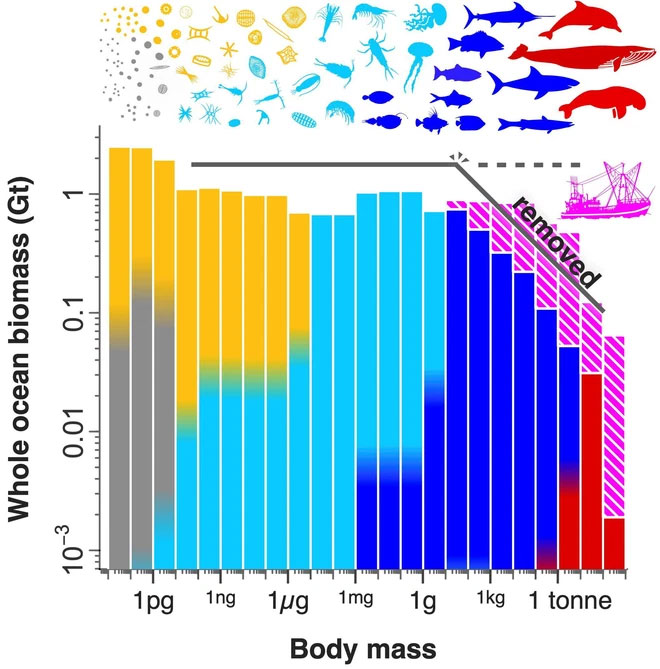
Hatton and his team at the Max Planck Institute discussed these questions. According to the research, several factors in the ocean can sustain the Sheldon Spectrum, including interactions between predators and their prey, metabolism, growth rates, reproduction, and mortality rates.
Conversely, Hatton identified one factor that could disrupt that balance: humans. After comparing pre-industrial statistics with current marine biomass, scientists observed a significant decline in species on the right side of the Sheldon Spectrum.
“The impacts of humans seem to have significantly shortened the last third of the spectrum“, the research team wrote. This is explained by the advent of deep-sea fishing vessels during the industrial era, which greatly increased our harvesting productivity. Coupled with the global population increase, there is a greater demand for seafood to sustain us.
“Humans have not only come to be the top predators in the ocean, but fundamentally, we have altered the flow of energy through the ecosystem, through the impacts we have accumulated over the last two centuries“, the study states.
Since the 1800s, we have reduced 60% of the biomass of fish and marine mammals. This is even worse for giant species like whales. Historical whaling has caused their populations to decrease by up to 90%.
Some species, like the blue whale, have disappeared by as much as 99% just from 1900 to 1960. Humans have wiped out 1.5 million whales just in the Southern Ocean, contributing to what is known as the “paradox of mollusks.”
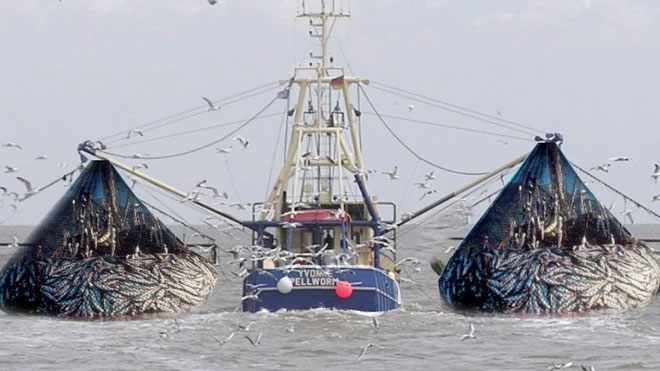
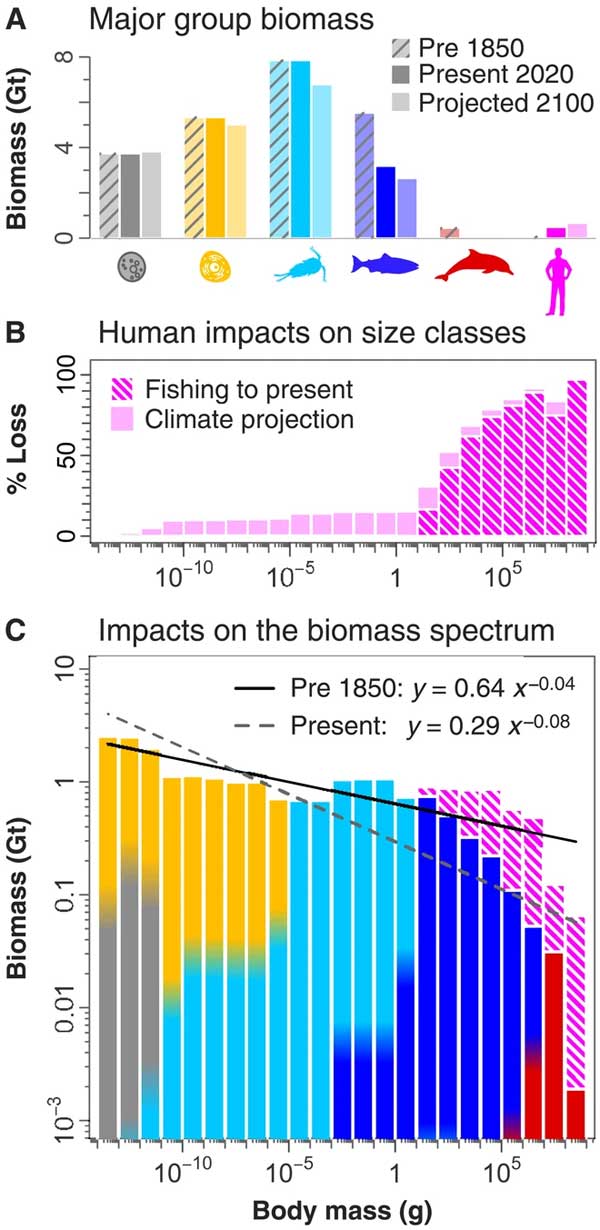
The decline in fish and marine mammal biomass due to human exploitation began during the industrialization period.
“It seems we have disrupted the entire Sheldon distribution spectrum, one of the greatest laws known in nature“, marine ecologist Ryan Heneghan from Queensland University of Technology stated. “And humans are not just fishing; we are impacting the oceans in unimaginable ways.“
All the fish and seafood we catch only serve a mere 3% of human food demand. Yet, this corresponds to 2.7 billion tons of the largest marine species.
Researchers suggest that with these figures, the seafood industry should reassess its operations. “We can reverse the imbalance we have created by reducing the number of fishing vessels operating worldwide“, they write. “Reducing overfishing also helps develop a more sustainable fishing industry. That would be a win-win solution.“
The research has been published in the journal Science Advances.


















































